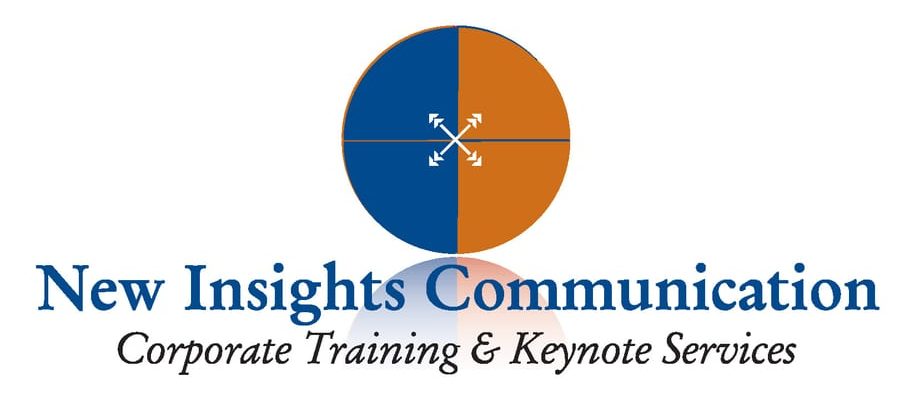It’s easy to send mixed signals or miss the communication mark at work. Just ask anyone who works for a living in the fast-paced, exciting world of commerce and leadership communication. With “open lines of communication,” the team canoe heads in the right direction with all canoeists paddling in the same direction. But with “incomplete communication,” you can end up with lack of morale, or the equivalent or an elephant sitting in the canoe, lazily grinning. When members of the team don’t listen well, they also don’t generate new ideas that will provide strategic solutions to old problems.
BEING A MORE EFFECTIVE COMMUNICATOR AT WORK AND HOME ISN’T IMPOSSIBLE USING THE “TALK TO ME” COMMUNICATION SYSTEM
I recently led a luncheon seminar for business executives on “the business of communication” for the Entrepreneurial Development Network or EDN in Dayton, Ohio. The seminar was sponsored by the Dayton Development Coalition, the Dayton Metro Library and Greater Dayton IT Alliance. My colleagues from Aileron were present, too. It was a highly interactive training seminar that tested each participant’s talk type, role-played how Empathizers and Instigators too frequently misunderstand one another, and demonstrated how to stay on the right road of communication for the benefit of all. The bottomline: My “Let’s Talk” seminars teach you how to be more responsive to other types of people or communicators to produce better results for all constituents.
WHAT’S THE TOUGHEST COMMUNICATION CHALLENGE YOU FACE AT WORK TODAY?
In all, 9 Empathizer or E-type communicators and 15 Instigator or I-type talkers participated. Here are their answers to “What’s the toughest challenge you’re facing at work today?”
1. Incomplete communication. Being complete in all communications, verbal and written, so there is a good exchange of complete ideas and accurate messages.
2. Misunderstanding of roles or positions. Unclear communication about who does what, when and how and why.
3. Being too virtual. No daily “kneecap to kneecap” or “face-to-face” human interaction where you can “read” the nuances or tone of the speaker message.
4. Too much e-mail. Large quantities of unnecessary e-mail can tighten the noose of “lack of time” around your neck, or you may accidentally delete an important message because you prefer to talk by phone or in person.
5. Clarity and clarifying. Getting across what is meant and needed and the “keep it simple” ordering of tasks to accomplish in order to get the job done.
6. Not listening. Too many strong personalities in the meeting room at the same time trying to get their point across without encouraging or including differing viewpoints of the “less vocal” speakers.
7. Fear of public speaking or debating. Team members who fear speaking up, although they have vital input, for fear of appearing stupid, outnumbered or resistant to change.
8. Words as gospel. Using “bookish” words or talk to make a point but missing the boat of real world applications using uncommon, common sense that energizes action.
9. Taking enough time to toss around creative or novel ideas. Hurrying through agenda items, or taking too much time on distracting people or problems, thus failing to meet and greet “outside of the box” emerging trends.
10. Butting heads. Too many bulls in the china closet “butting heads” about the “right and wrong ways” to problem-solve versus solving the problems in “what works or doesn’t work” steps…and then moving on by compromising.
11. Agreeing on a resolution to a problem. Coming to agreement on a productive course of action is best accomplished by adopting the strengths of your opposite communicator type.
12. Being able to dialogue. A good dialogue is not a bombastic monologue. It involves handling emotional objections logically, and negotiating a new route to take with a fellow driver on the two-way communicator highway.
MOST PEOPLE ARE IDIOTS?
USING WHAT WORKS VS. DOESN’T WORK DEFINES EFFECTIVE COMMUNICATION
The point of using positive and effective communication isn’t to get your way, but to get the job done by realistically accounting for and being responsive to what is and what isn’t working. In fact, elsewhere I’ve written about “The Hummingbird Effect,” which tells a story about how a trapped hummingbird in my garage did more and more of what wasn’t working and became exhausted. “Doing the right thing” is not the same thing as “Doing what works to solve a complex problem whose solution is not obvious.”
UNDERSTANDING COMMUNICATOR TYPES
Reserve the time to be a better communicator today. Using the “Talk to Me” communication system, four minutes of daily study is all it takes to become a more proficient, positive and effective communicator to make things happen that are good for us. Being too confident and overbearing, does not recognize the importance of others’ perspectives that will enable you to get the job done faster and with less expense of frustration. You are either an Empathizer or Instigator communicator. If you aren’t working to better your type, you had better be prepared to fall behind in the race for better business opportunities.
ABOUT LEADERSHIP COMMUNICATION AND ORGANIZATIONAL BEHAVIOR COMMUNICATIONS CONSULTANT DR. DENNIS O’GRADY
Dr. Dennis O’Grady is a communications psychologist with over 30 years experience dedicated to the advancement of personal growth and organizational development. His executive and business consulting programs and keynote seminar speeches focus on the areas of communication, change management, leadership development, strategic decision-making and conflict resolution and relationship enhancement. Dr. O’Grady’s third book that teaches his effective and positive communication system is called “Talk to Me: Communication Moves To Get Along With Anyone” and is available at his Web site and at Amazon.
